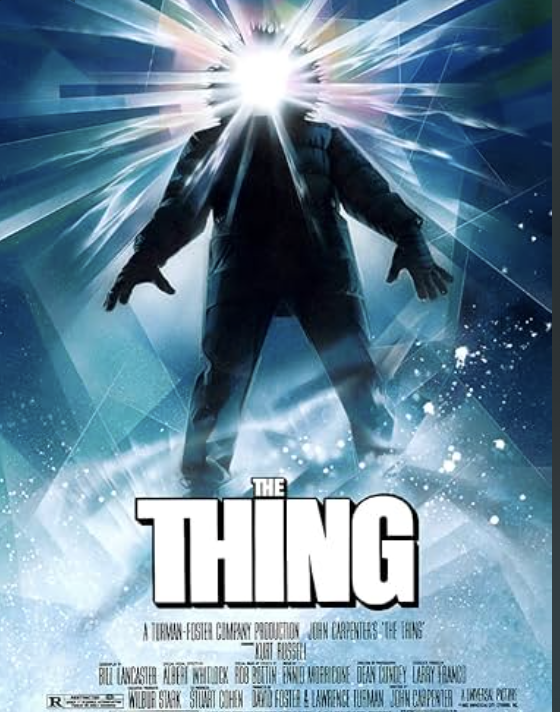Debating the Greatest Horror Movie of All Time: ‘The Thing’ vs. ‘The Silence of the Lambs’
This Halloween season, William McCall and James Pocchia, the Senior Guide Editors, stepped up to the podium (the kitchen table in their Vil A apartment) to debate the greatest horror movie of all time. McCall had hoped to resolve this with single combat, but here we are.
For this debate, Pocchia has thrown his support behind Jonathan Demme’s 1991 psychological horror film “The Silence of the Lambs,” while McCall has selected 1982’s “The Thing,” John Carpenter’s remake of the 1951 classic “The Thing from Another World.”
Warning: This article contains mild spoilers for “The Thing” and “The Silence of the Lambs.”
Point of Contention One: Acting
M: Now, this one’s got to go to “The Thing.” Keith David, Wilford Brimley and Richard Masur put in understated yet anxiety-filled performances as mechanic Childs, Dr. Blair and dog handler Clark, respectively, none of which distract from the film’s main attraction (the horrifically realized alien “Thing”). Not to mention, Kurt Russell puts on an all-time performance of unparalleled charisma as helicopter pilot R.J. MacReady. I concede that the rest of the characters aren’t nearly as fleshed out as they could be (perhaps with the exception of station commander Garry, played by Donald Moffat), but that’s just the way it is in big-cast horror movies. “The Thing” needs victims!
P: Two words come to mind here, William: Hannibal Lecter. Anthony Hopkins delivers one of the finest performances in the history of horror, instilling terror into viewers’ hearts with fierce stares, a cooly restrained tone and the occasional creepy hiss. With only 16 minutes of screentime, Hopkins fleshes out one of the most compelling cinematic characters of all time –- a brilliant, cannibalistic psychopath that demands his audience’s attention. His performance is nicely complemented by two other outstanding turns from Jodie Foster and Ted Levine as FBI agent Clarice Starling and Buffalo Bill, the serial killer whom Starling hunts, respectively. Foster gives a believable portrayal of a fiercely determined cadet intent upon overcoming her traumatic past, while Levine’s performance is thrillingly unrestrained and unsettling. That core trio alone makes the film about as well-acted as any other in its genre — and, in my view, significantly more so.
Point of Contention Two: Atmosphere
P: There are several reasons why “The Silence of the Lambs” continues to serve as an inspiration for the minds behind modern horror films. Every technical aspect of Demme’s film is impeccable. The camerawork is mesmerizing — the slow tracking shots past the psychopath holding cells and the innovative, tension-creating usage of night vision in the final act both immediately come to mind. The musical score encapsulates the simmering dread in the protagonist’s heart perfectly, coming to a crescendo when she makes the important discoveries that bring her ever closer to finding Buffalo Bill.
M: “The Silence of the Lambs” may have adopted tension, but “The Thing” was born in it, molded by it. The claustrophobic Outpost #31 serves as a terrifying staging ground for the otherworldly body horror that the film’s alien monster unleashes, eliciting from the audience the same feelings of total circumscription and isolation that plague MacReady and the rest of the group. The harsh Antarctic environment further contributes to “The Thing’s” bleak, uncompromising atmosphere, as the snow both sets the scene and serves as another existential threat for our heroes to contend with.
Point of Contention Three: Themes
M: While “The Silence of the Lambs” has a much more nebulous — and therefore more nuanced set of themes (from what I can tell, it’s basically just … about evil?), “The Thing” benefits from a defined, historically rooted cinematic thesis. Simply put, “The Thing” is all about paranoia: the feeling that the people closest to you might be completely different than they seem, and perhaps even be intent on harming you or the community. Released in the wake of the mid-20th century angst surrounding Communism, Carpenter’s film taps into a global zeitgeist characterized by mistrust and fear to produce a streamlined film that still holds up under modern scrutiny.
P: I don’t consider the themes of “The Silence of the Lambs” to be that nebulous — frankly, I think the film thrives in its masterful execution of relatively simple concepts. The film reaches its thematic climax when Starling reveals that she yearns to rescue the girl Buffalo Bill kidnapped because, for Starling, saving the girl’s life means redeeming her own failure as a child to rescue the mewling lambs before their slaughter. In essence, then, “The Silence of the Lambs” is a film about overcoming personal trauma, even in the face of monstrous evils. It’s about channeling the darkness in one’s past into a positive or, at least cathartic, future.
Point of Contention Four: Endings
P: I adore the ending of “The Thing,” but “The Silence of the Lambs” easily matches its tension with an ominous and oddly satisfying conclusion to its thrilling narrative. Lecter’s phone call with Starling drips with foreboding, reminding the audience that Hopkins’ iconic psychopathic genius lives on, that evil persists in spite of Buffalo Bill’s demise. And yet, the ending challenges the audience by impelling viewers to feel a twinge of sympathy for Lecter, finally on the cusp of exacting revenge upon the slimy Dr. Chilton, who mistreated Lecter during his time in custody. At that moment, we’re not sure how to feel about Lecter, but we are desperate to know what he will do next.
M: If you want to talk about cliffhangers, “The Thing” might be one of the most iconic exemplars in modern cinema. Childs and MacReady, facing imminent death in the Antarctic snowscape as their Outpost burns behind them, are still not sure if one or the other is infected (though Child’s lack of visible breath condensation in the cold may give him away). The scene is striking and bleak, and it splendidly hammers home the film’s central messages.
Concluding remarks:
M: Well, I think it’s clear who won.
P: I agree. I do wish we could chat longer, but I’m having an old friend for dinner.
M: Why don’t we wait here, see what happens.















